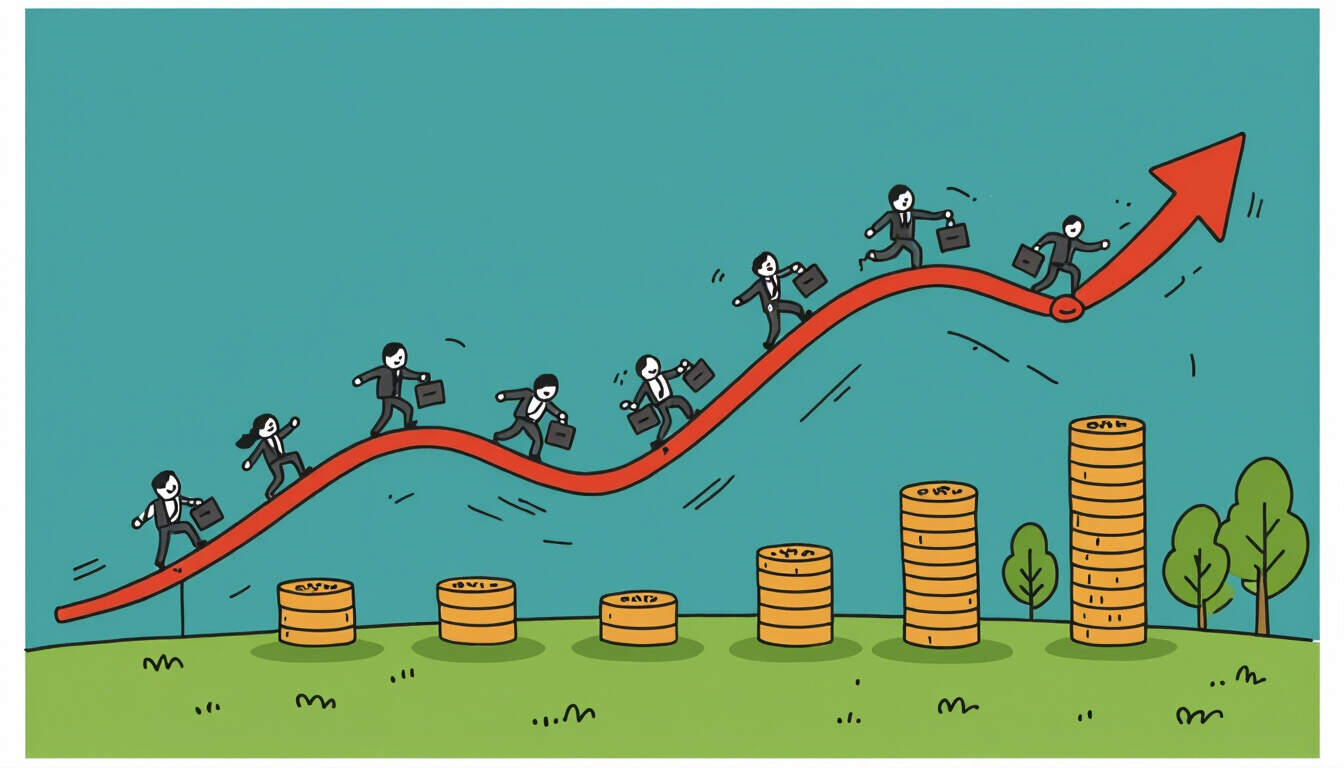Yield Curve Strategies in Compounded Leverage Systems
 by Verner Mayer
by Verner Mayer
Yield curve strategies offer advanced tools for investors to capitalize on interest rate changes within compounded leverage systems. This article examines how these strategies can amplify returns while managing risks, providing insights for financial professionals seeking to optimize portfolios.

Yield curve strategies play a key role in compounded leverage systems, allowing investors to build upon initial gains through repeated borrowing and reinvestment. These approaches focus on the relationship between short-term and long-term interest rates, helping to identify opportunities for growth.
In financial markets, the yield curve represents the line plotting interest rates for bonds of different maturities. Yield curve strategies involve adjusting portfolios based on expectations of shifts in this curve. For instance, a flattening curve might signal economic slowdowns, prompting adjustments in leveraged positions.
Compounded leverage systems use borrowed funds to increase exposure, with returns potentially multiplying over time. When combined with yield curve strategies, investors can enhance outcomes by timing their entries and exits. A common method is the barbell strategy, which balances short-term and long-term bonds to capture yields while maintaining flexibility.
Key Elements of Yield Curve Strategies
Several core techniques form the foundation of these strategies. First, the steepening trade anticipates the curve becoming more pronounced, often due to rising long-term rates. This can be integrated into compounded leverage by reinvesting profits from short positions into higher-yield assets.
Another approach is the bullet strategy, concentrating investments in bonds maturing around the same time. In compounded leverage systems, this helps lock in gains and reduce volatility over multiple cycles.
Investors often use these methods to address market conditions. For example, during periods of low rates, strategies might emphasize longer-dated securities to maximize compounding effects. This requires careful analysis to align with overall leverage goals.
Integrating with Compounded Leverage
Compounded leverage involves layering debt on existing assets, creating a cycle of amplified returns. When paired with yield curve strategies, the process becomes more precise. By forecasting curve movements, professionals can adjust leverage ratios to optimize performance.
One effective integration is through derivatives like futures contracts. These allow for leveraged bets on curve changes without tying up large capital. Over time, successful trades can compound, turning modest initial investments into substantial portfolios.
Risk management is essential in this setup. While strategies offer potential for high rewards, they also expose investors to interest rate fluctuations. Monitoring economic indicators helps mitigate losses, ensuring that leverage does not erode gains.
Benefits and Considerations
The primary advantage of combining yield curve strategies with compounded leverage is the ability to achieve exponential growth. For instance, in a rising rate environment, shorting long-term bonds while leveraging short-term holdings can lead to outsized profits.
However, challenges exist. Market unpredictability can lead to margin calls, forcing premature liquidations. Professionals must evaluate their tolerance for such risks and use diversification to protect against adverse shifts.
In practice, many analysts employ quantitative models to simulate outcomes. These tools assess how different curve scenarios might affect leveraged positions, providing data-driven insights for decision-making.
Practical Applications
Consider a scenario where an investor uses compounded leverage to enter yield curve trades. Starting with a base portfolio, they borrow funds to increase their stake in short-term instruments. As the curve shifts, they reinvest proceeds, allowing returns to build upon each other.
This method suits experienced users, such as financial analysts who track macroeconomic trends. By applying yield curve strategies, they can adapt to changing conditions, turning insights into actionable plans.
Over time, the cumulative effect of compounding can significantly boost net worth. Yet, it demands discipline and ongoing education to navigate effectively.
Conclusion
Yield curve strategies within compounded leverage systems represent a sophisticated tool for advanced investors. By leveraging interest rate dynamics, professionals can pursue enhanced returns while balancing potential downsides. With careful implementation, these approaches continue to shape modern investment practices, offering pathways to sustained financial success.
